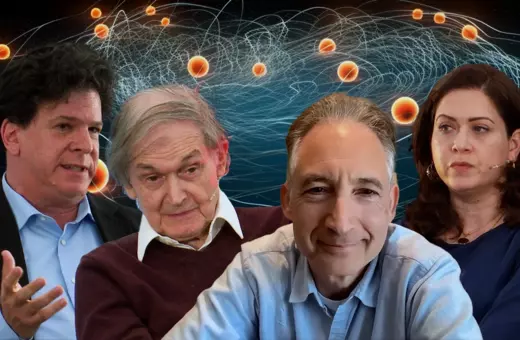The universe is expanding, and Einstein’s theory of gravity makes a definite prediction about how the expansion rate should change over time: it should decrease, since the gravitational attraction between all the matter in the universe continually opposes the expansion.
The first time this prediction was observationally tested, around 1998, it was found to be spectacularly in error. The expansion of the universe is accelerating, not decelerating, and the acceleration has been going on for about six billion years.
How did cosmologists respond to this anomaly? If they adhered to the ideas of philosopher Karl Popper, they would have said: “Our theory of gravity has been conclusively disproved by the observations; therefore we will throw our theory out and start afresh.” In fact, they did something very different: they postulated the existence of a new, universe-filling substance which they called “dark energy”, and endowed dark energy with whatever properties were needed to reconcile the conflicting data with Einstein’s theory.
Philosophers of science are very familiar with this sort of thing (as was Popper himself). Dark energy is an example of what philosophers call an “auxiliary hypothesis”: something that is added to a theory in order to reconcile it with falsifying data. “Dark matter” is also an auxiliary hypothesis, invoked in order to explain the puzzling behavior of galaxy rotation curves.
Karl Popper first began thinking about these things around 1920, a time when intellectuals had many exciting new theories to think about: Einstein’s theory of relativity, Freud’s theory of psychoanalysis, Marx’s theory of historical materialism, etc. Popper noticed that Einstein’s theory differed from the theories of Freud and Marx in one important way. Freud and Marx (and their followers) appeared unwilling to acknowledge any counter-examples to their predictions; every observed fact was interpreted as confirmation of the theory. Whereas Einstein made definite predictions and was prepared to abandon his theory if the predictions were found to be incorrect.
Popper argued, in fact, that this difference is the essential difference between science and non-science. A scientist, Popper said, is someone who states—before a theory is tested—what observational or experimental results would falsify it. Popper’s “criterion of demarcation” is still the best benchmark we have for distinguishing science from non-science.
At the same time, Popper recognized an obvious logical flaw in his criterion. Theories, after all, are arbitrary; they are created out of thin air. What is to keep a scientist, Popper asked, from responding to an anomaly by saying: “Oh, wait, that is not the theory that I meant to test. What I actually meant to propose was a theory that contains this additional hypothesis”—a hypothesis that explains the anomalous new data. (This is precisely what some cosmologists do when they say that dark energy has been in Einstein’s theory all along.) Logically, this is perfectly kosher; but if scientists are allowed to proceed in this way - Popper realized - there could be no hope of ever separating science from non-science.



















Join the conversation